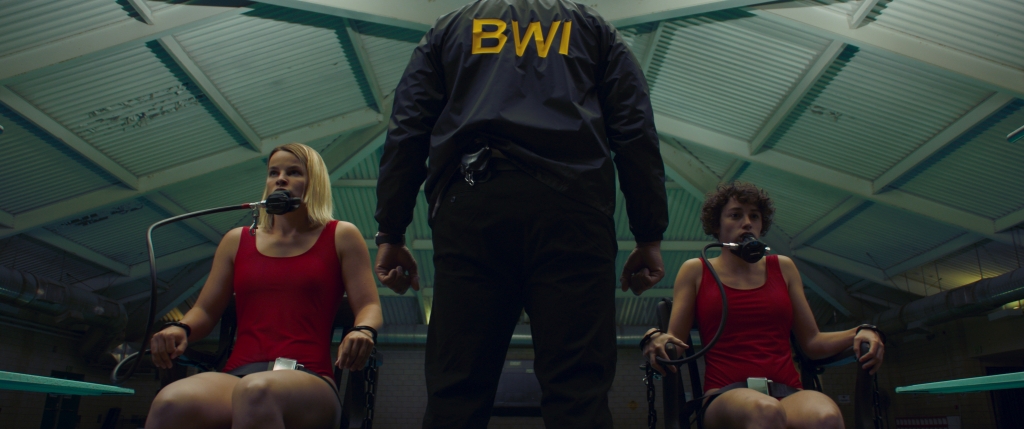The film Witch Hunt premiered at South By Southwest Film Festival (SXSW) 2021. The film stars Gideon Adlon, Elizabeth Mitchell, Abigail Cowen, Cameron & Nicholas Crovetti, and Christian Camargo.
Summary of Witch Hunt film
In a modern America where witches are real and witchcraft is illegal, a sheltered teenager must face her own demons and prejudices as she helps two young witches avoid law enforcement and cross the southern border to asylum in Mexico.
About writer/director Elle Callahan
Elle Callahan is a Los Angeles-based film director and sound designer. An alumna of USC’s School of Cinematic Arts, Callahan focuses on the genres of mystery and magic realism. Her first feature film Head Count premiered at the SXSW Film Festival in 2018, winning the Special Jury Prize in the Nightfall category.
Read our interview:
What was your drive behind writing and directing this project?
Elle Callahan (EC): I’ve always wanted to tell a story that revolved around witches, and I wanted to modernize it. And this is the story that was born from plopping witchcraft into the 21st century and how I thought America would look with that aspect mixed in. And I also wanted to tell a predominantly female-driven story and this just felt like the natural outlet.

The prosecution of witches in Witch Hunt is essentially a metaphor for systematic oppression and racism against minority groups. The film holds up a mirror up to the audience to reflect real-life events. Was that the intended effect?
EC: It definitely was. Heavy topics like that we tend to shut out and shut down and not want to engage with. Presenting it in a way that was hidden in a more fantasy-like world was a more easily digestible form of artistic expression in terms of getting that point across.
What went into your creative decision of having the flashback cut of the girls’ mother on the stake appear to overlay with smoke and flames effects?
EC: I wanted there to be an inherent connection between all the witches and for our main character to be shown the danger of these kinds of prejudices that she was allowing herself to be associated with. Her friends in school had a certain way of looking at witchcraft and teasing those that think are involved in it. In reality, that can have greater implications and effect on people’s lives. I wanted to bring that back and hit that home.
What does the blue rose represent in the film?
EC: A blue rose is the only color of rose that doesn’t exist naturally. And it can’t be genetically made. If you see a blue rose, it’s either dyed or actually purple. So I chose the color of blue as the color for magic throughout the film. It represents this magical aspect.
What was your biggest challenge or setback in creating this film?
EC: A challenge that every film faces in general is just getting made. Getting enough people to believe in your vision. But once you find the right group of creatives that you click with, that can all come together. It’s a magical experience. Getting the film off the ground is the hardest part of anything, getting from script to actually shooting.
Did you shoot during the Mexican border by any chance?
EC: We did not. We shot all in the studio zone north of Los Angeles. We had to make it look like we did.
You have always been drawn to fairy tales, myths, and legends. Do you foresee yourself working on a project that’s more high-fantasy or mythical?
EC: Yes, I hope so! Everything I do I make sure it’s based in folklore, because it’s my favorite type of story. I hope to stay in that realm.
What kind of folklore do you enjoy?
EC: Greek and Roman stories, but also just the normal fairy tales because those are the stories we would pass down from generation to generation and the way we teach our children morals. I think they’re all quite fascinating. Being a creative, if you look at any story that’s told, if you boil it down, it’s just a fairy tale. There’s so many stories and everything grows from those few. I look at folklore for my inspirations, because those are kind of like the original stories.
What advice do you have for young women looking to break into the film industry as a writer/director?
EC: Just do it! Don’t wait for anyone to give you permission. Just write and write and write. Be your own biggest advocate and your own biggest fan. In my experience, I find I’m a lot more critical of myself than my male counterparts. I think I like to be a perfectionist. But in reality you need to get your art out there and have faith that what you’re doing is good. Because you have to be your own biggest fan.
Read more of ChinLin’s articles.
Learn more about the Witch Hunt film on Imdb.com.
Sign up to get news, announcements, and other fun stuff straight to your inbox.
Featured image credit: Defiant Studios, Kodiak Pictures

